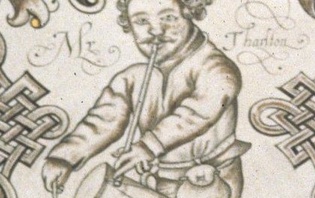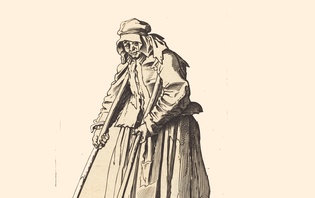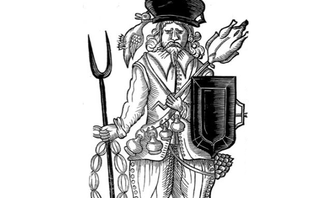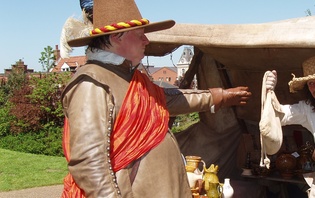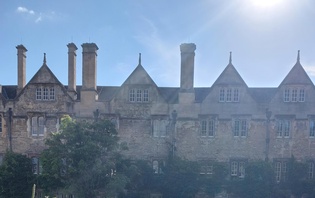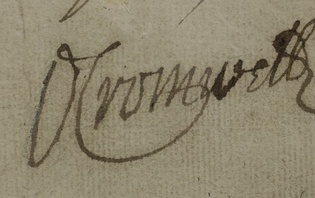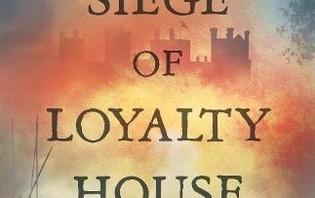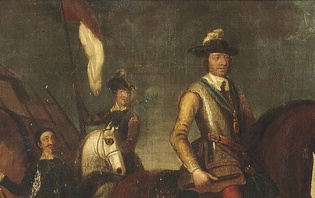The Civil Wars and the Wider World
The Civil Wars were a multi-national and multi-ethnic conflict. The fact that the violence was exported to places such as America and the Caribbean demonstrates that the wars were not confined to the British Isles. In this blog, David Appleby gives a sneak preview of some of the petitions, certificates and other documents which are currently being prepared for inclusion in our online database – documents which illustrate the fact that the human cost of the conflict was felt by people far beyond the British Isles.
For various reasons, this project is focused on injuries and bereavements arising from the civil wars fought in England and Wales, and various uprisings in those countries, between 1642 and 1660. However, these struggles were never exclusively ‘English’, even in England. A previous blog drew attention to the Scots who were wounded in England, and subsequently given medical care and financial aid by local English authorities. Many Scots served in royalist and parliamentarian armies in England, and in 1644 the Scottish Covenanters sent a large army over the border to aid their (then) parliamentarian allies. A particularly controversial addition to Charles I’s forces were soldiers from Ireland. Despite vitriolic parliamentarian propaganda (and the King’s negotiations with the Irish Confederacy for a loan of some 10,000 Catholic troops) most of the soldiers who came from Ireland to bolster the royalist armies were English Protestants who had originally been sent there in 1641-2 to repress the Catholic uprising. Parliament, for its part, had amongst its officer corps Irish Protestant commanders such as Dublin-born Colonel Michael Jones. More surprisingly, Micheal Ó Siochrú has found that in the 1650s the New Model Army became so critically short of manpower during its campaign in Ireland that it not only welcomed ex-royalists into the ranks, but even recruited Gaelic Catholics. Further afield, various individuals returned from the American colonies to fight in the Civil Wars, and there are records of soldiers coming from all over Europe, and also North Africa and the Middle East.
Just as the British Civil Wars sucked in people from outside the British Isles, so documents currently being prepared for our database will illustrate how the conflict had consequences across the globe. References to the Caribbean are beginning to crop up on a regular basis. By the time of the Civil Wars, large numbers of people were needed to work the tobacco and cotton plantations of English North America, particularly Virginia and Maryland, and also the increasingly profitable (but notoriously unhealthy) sugar plantations in the Caribbean. At this time the trade in African slaves was in its infancy, so before the Civil Wars plantation workers were more likely to be English and Irish men and women who had voluntarily sold themselves to plantation owners for a period of between five and seven years. Middlemen and ship owners made lucrative profits from the trade in ‘indentured servants’ – so much so that the more unscrupulous entrepreneurs began to kidnap people off the street, and transported them to Barbados against their will. In the seventeenth century the term ‘Barbadoed’ meant much the same thing as the term ‘Shanghaied’ would in the nineteenth century. Many of these kidnap victims were children, and the kidnappers became known as ‘spirits’ (hence the term ‘spirited away’). In 1645 Parliament passed an Ordinance against kidnapping, and over the ensuing years apprehended several ships engaged in the nefarious trade. Convicted criminals were also transported to the plantations in America and the Caribbean, although this practice was not technically legal, as it contravened the precept of habeas corpus. However, the pre-war authorities usually got around this technicality by getting the criminals to agree to indentured servitude in order to escape a death sentence. During the Civil Wars, both sides were faced with the problem of accommodating thousands of prisoners-of-war. Parliament used its dominance of the sea lanes to solve the problem by transporting thousands of Irish, English, and Scottish prisoners to Barbados between 1641 and 1655. The climate, poor diet and a variety of diseases ensured that a large proportion of these prisoners would never return. However, some did.
Andrew Heywood petitioned Devon justices in 1686, declaring that he had refused to change sides after being captured by Parliament, and, as a result, ‘finding the petitioner still resolved not to quit his loyalty, tho hee lost his liberty, they, in a barbarous manner, sold the petitioner as a slave into a certaine Island called Nevus [Nevis, in the West Indies].’
Several royalist officers fled to their families’ plantations in Barbados following Charles I’s capitulation in 1646. In 1650, enraged by the King’s execution, and bolstered by defectors from the parliamentarian cause, the royalists seized power in Barbados, and declared for Charles II. The new English Commonwealth could not afford to tolerate such defiance (or the loss of revenue), and immediately began work on plans to retake the island. Sir George Ayscue was given command of the fleet which set out for the Caribbean in August 1651. Between November and December 1651, Ayscue attempted to take the island by amphibious assaults, supplementing his force with volunteers from some 170 Scots prisoners-of-war recently arrived from the battle of Worcester. Eventually Ayscue and some exiled Barbadian merchants secretly persuaded a royalist commander and plantation owner Thomas Modyford (a cousin of George Monck) to bring his regiment over to Parliament. Having established a foothold, Ayscue forced the remaining royalists to surrender the island in January 1652.
With Barbados once more under its control, the Commonwealth was free to transport further shipments of prisoners. Apart from prisoners taken during the ongoing war in Ireland, many royalists were sent to the Caribbean following the abortive risings in Western England in 1655. Two Hampshire survivors of the so-called ‘Salisbury Rising’, Edward Penton and Robert Browne, obtained money from the Restoration authorities in recognition of the hardships suffered during their captivity on Barbados.
A certificate supplied for Thomas Bates of Northamptonshire, written by George Monck, Duke of Albemarle in 1668, is more difficult to interpret. Albemarle states that Bates had lost a leg in Barbados serving in the regiment of Sir Tobias Bridge ‘in the late wars’. Colonel Bridge was an ex-parliamentarian who, like Albemarle, had aided Charles II’s restoration. He had been entrusted with a regimental command in Barbados in 1666. However, the Second Anglo-Dutch War of 1665-67 was virtually over by the time Bridge took up his Caribbean command, and Albemarle’s certificate predates the Colonel’s retaking of Tobago during the Third Anglo-Dutch War by some years. In most of the petitions unearthed by our project the term ‘the late wars’ invariably refers to the Civil Wars; all of which opens up the intriguing possibility that the certificate might reveal an attempt on Albemarle’s part to secure money for an ex-parliamentarian veteran of the 1652 campaign. Certainly, in 1661 John Merrington of Halstead, Essex, had been given a gratuity on the basis that he had served ‘under the Duke of Albemarle’ (whereas in reality he had served in Monck’s regiment in the New Model Army). The same was true of Nathaniel Lingard and John Allen in Lincolnshire, and possibly several others.
The Civil Wars had other consequences for the Caribbean. One of the problems facing Oliver Cromwell on becoming England’s ruler in 1653 was how to employ the New Model Army. In 1655, goaded by the activity of royalist privateers, and seeking economic supremacy over England’s traditional foe, Catholic Spain, the Lord Protector sent General Robert Venables and Admiral William Penn with troops to capture Hispaniola. The attack was farcically mismanaged, and easily repulsed. Nevertheless, Venables and Penn did manage to capture Jamaica. It was in Jamaica where Elizabeth Pitman’s soldier husband died, as she was later to explain to Northamptonshire justices.
Following the Restoration of 1660, Charles II’s regime managed to raise sufficient money to pay off and disband many of the regiments of Cromwell’s ‘Old Army’. However, there was insufficient money to disband the entire army. One solution was provided by the King’s marriage settlement with Portugal in 1662. Some 4,500 men (mainly superfluous ex-parliamentarians, but also many ex-royalists and Irish Catholics) were sent to Portugal as auxiliaries in that country’s war of independence against Spain. By 1668 only 800 were still alive, and some 400 of these were sent to Tangier. Tangier had been given to Charles II as part of the dowry of his bride, Catherine of Braganza. The North African port was garrisoned by around 2,500 troops, again, most of them unwanted veterans of the Civil Wars. Past differences were put to one side as former enemies fought for their lives against almost daily onslaughts from Moorish forces. Mortality was high, and few survived to tell the tale. One who did was John Paine: Northamptonshire justices noted in 1665 that Paine had been shipped home, having received ‘severall desperate wounds, whereby he is disenabled to labor for his living.’ The veteran – who was very lucky to be alive – received a gratuity of forty shillings, and the promise that his case would be reviewed at the next quarter sessions.
Another item in the dowry of Catherine of Braganza was the Portuguese possession of Bombay. In 1665, some 500 ex-Cromwellian veterans were sent to India under the command of an ex-royalist officer, Sir Abraham Shipman. Over three hundred of these unfortunate men were dead within a year (which was largely the object of the exercise). It is not yet known how many of the remaining 200 returned, if any did. However, the fact that some men had survived terrible conditions in places such as Barbados, Nevis and Tangier, and were able to return to England to petition their local authorities, gives reason to hope that one or two of these early ‘Indian Army’ veterans may yet surface in the county archives.
Suggestions for further reading (in order of events):
Mark Stoyle, Soldiers and Strangers: An Ethnic History of the English Civil War (2005).
Carla Pestana, The English Atlantic in an Age of Revolution 1640-1661 (2007)
David J. Appleby, ‘“God forbid it should come to that: the feud between Colonel Guy Molesworth and Major-General O’Brien in Portugal, 1662”’, The Seventeenth Century, 26/2 (2011), pp. 346-67.
David J. Appleby, ‘Veteran politics in Restoration England 1660-1670’, The Seventeenth Century, 28/3 (2013), pp. 323-42
John Childs, ‘The English Brigade in Portugal 1662-1668’, Journal of the Society for Army Historical Research, 215 (Autumn 1975), pp. 135-47
Jonathan Riley, The Last Ironsides: the English Expedition to Portugal, 1662-1668 (2017)
Jack Smithers, The Tangier Campaign: the Birth of the British Army (2003).

